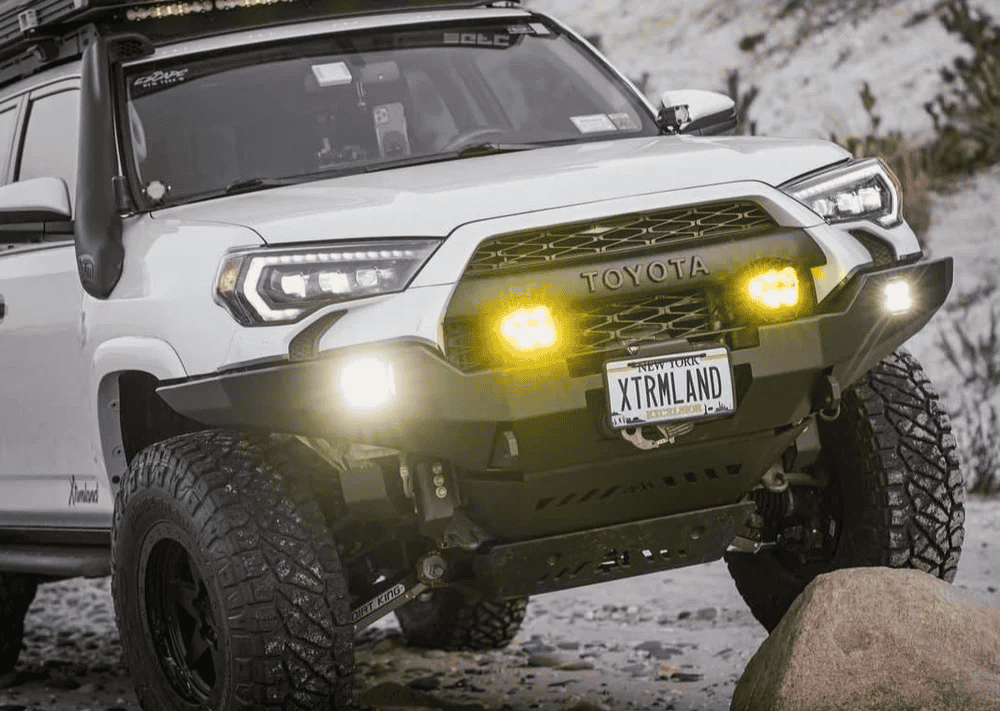Overland Vehicles

The strongest camper starts on paper. Map your sleeping, galley, storage, and power zones, then sketch how weight spreads across the floor. A rigid shell should move loads into corners and edges, not into the middle of large panels. Keep heavy items low and centered to preserve handling and braking. Plan service corridors for wiring and plumbing so you never bury a critical part behind a fixed cabinet. This early work prevents cracked panels and squeaks later.
Know your truck payload and axle ratings, then weigh components before installation. Keep the center of gravity forward of the rear axle whenever possible. Mount batteries, water, and spares low to reduce sway and pitching. Choose compact appliances that do not tip the weight balance to one side.
Treat the camper as a box that lands on the bed rails and floor with load spreaders. Use isolation pads where needed and design tie points that align with the truck frame. The connection should allow a bit of movement without crushing panels while keeping the camper seated under braking and off road articulation.
Truck camper framing can be wood, aluminum, steel in key zones, or composite cores. Each path can work when used thoughtfully. Wood offers warm feel, easy shaping, and simple field repairs. Aluminum brings excellent stiffness to weight and resists rot, but needs careful isolation from dissimilar metals. Steel is best reserved for high stress interfaces like tie downs and jack mounts. Composites such as foam or honeycomb with skins can be very light and strong if bonded correctly.
For wood, select marine grade or exterior plywood with sealed edges. Use glued joints with screws only as clamps, not the sole structure. For aluminum, square tube or hat channel with bonded joints can produce a quiet, rigid frame. Isolate metals with primers and gaskets to avoid corrosion. Many builders combine a wood floor and aluminum upper to balance feel and strength.
Think in terms of load paths. Roof beams should land on wall uprights, wall uprights should land on the floor perimeter, and the floor should land on bed rails or a perimeter subframe. Add cross bracing near door and window openings to combat racking. Where cabinets meet the shell, tie them into the structure so they act like bulkheads rather than hanging boxes.
Modern structural adhesives spread loads over a larger area and quiet the ride. Use them along with appropriate screws, rivets, or bolts that match the material. Pre drill and seal penetrations. In high vibration zones, choose mechanical fasteners with locking features and large washers or backing plates.
Moisture is the silent destroyer. Control bulk water with proper flashing and shingled overlaps, and manage vapor with smart layer placement. In cold to warm swing climates, a continuous thermal break reduces condensation on cold members. Insulation choices include closed cell foam, mineral wool, and composite cores. Prioritize materials that do not trap water and can be dried or replaced.
Pitch the roof slightly and route water away from openings. Use wide tape or formed trim at seams with sealant that remains flexible. Every hole for a vent, light, or rack needs a reinforced frame, a gasketed flange, and a maintenance plan. Inspect these points each season.
Run wires and hoses in protected chases with drip loops and service panels. Label circuits and leave pull strings for future upgrades. Quick access to pumps, fuses, and filters turns a roadside fix into a short stop instead of a trip ender.
Even the best plan benefits from expert review. If your design involves complex composite bonding, integrated roll protection, or large slide openings, a professional shop can engineer those high stress zones and deliver a quieter, longer lasting camper. For a purpose built adventure platform with tested structures and clean system integration, explore Explore overland rigs. If you want a professionally built structure with your layout goals, our team can deliver a dialed shell and interior under one roof through Custom overland upfit. Curious about our build approach, materials, and handoff experience, visit Why choose OZK Customs.
If this guide helped you map out structure, load paths, and moisture control, imagine how far a purpose built platform can take you. OZK Customs builds complete adventure vans and overland rigs with rigid shells, quiet interiors, and service friendly systems. We listen first, then engineer the right framing, mounting, and interior to match how you travel. Fly into Northwest Arkansas, walk through your new rig at our lounge, and roll out ready for the next road.
More From OZK Customs:
Want a rock solid camper without the guesswork? OZK Customs designs and builds pro grade adventure rigs with quiet interiors, rigid structures, and field serviceable systems. Tell us how you travel, and we will engineer the layout, structure, and upfit to match. Start your build plan today.
ADDRESS:
6159 E Huntsville Rd, Fayetteville, AR 72701
PHONE:
(479) 326-9200
EMAIL:
info@ozkvans.com